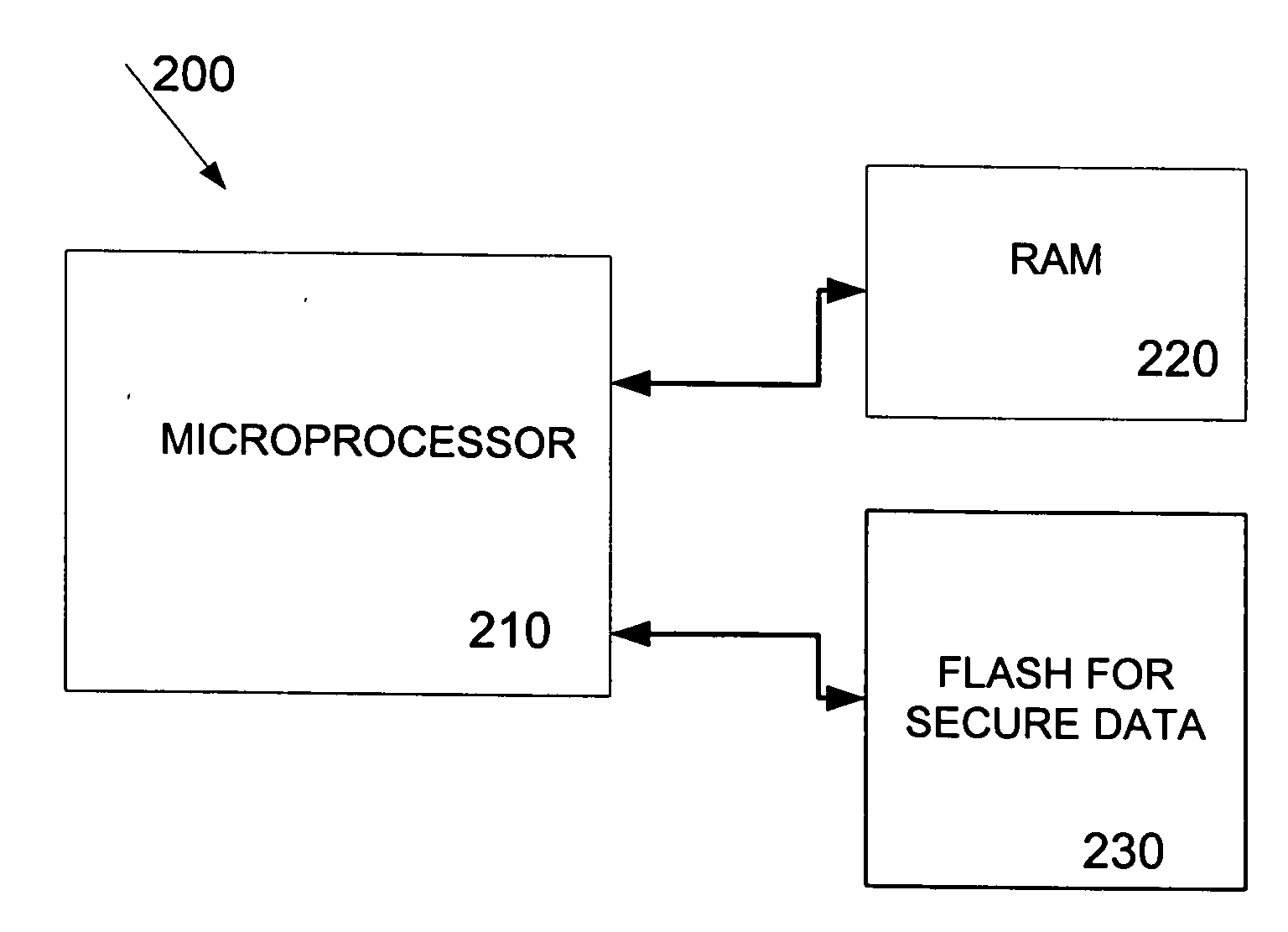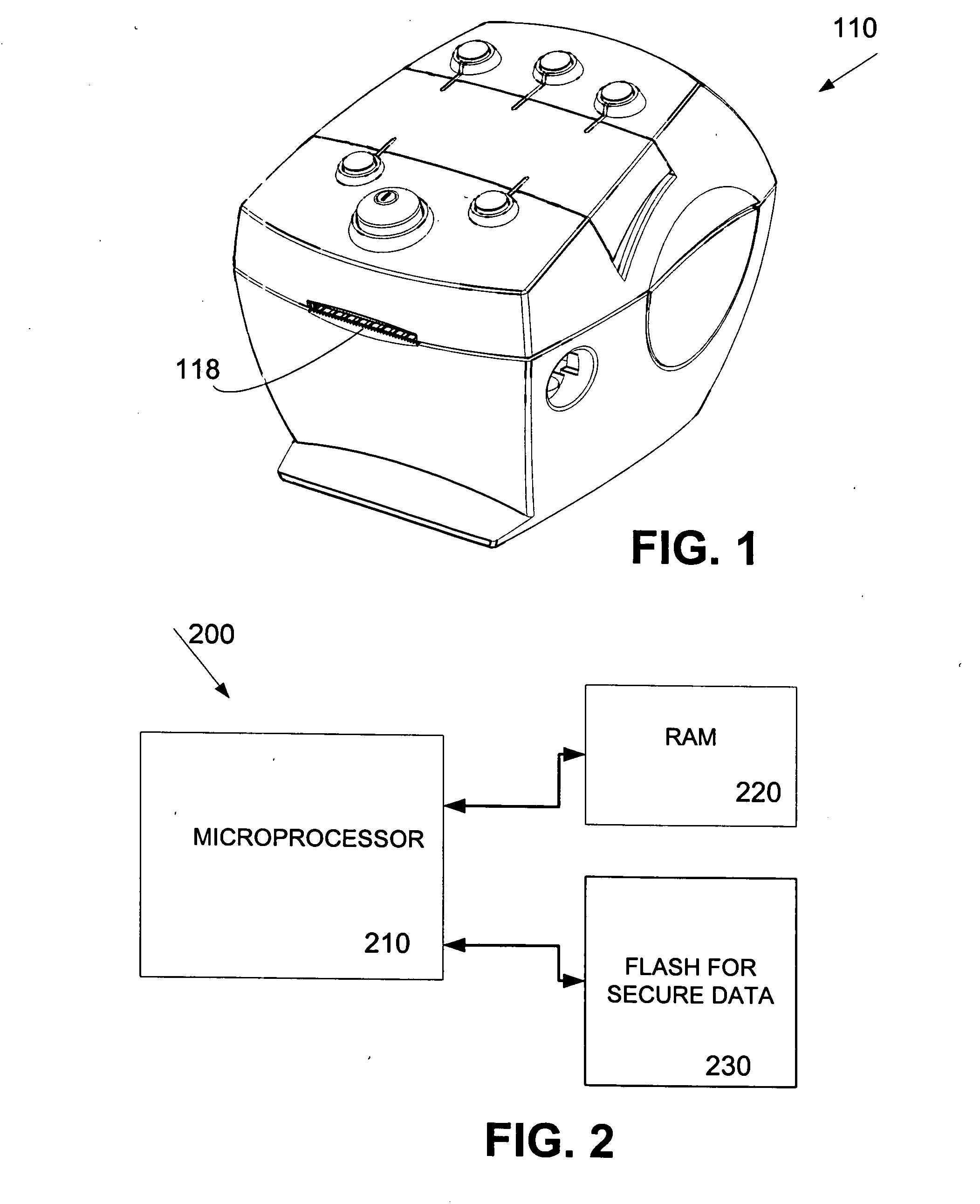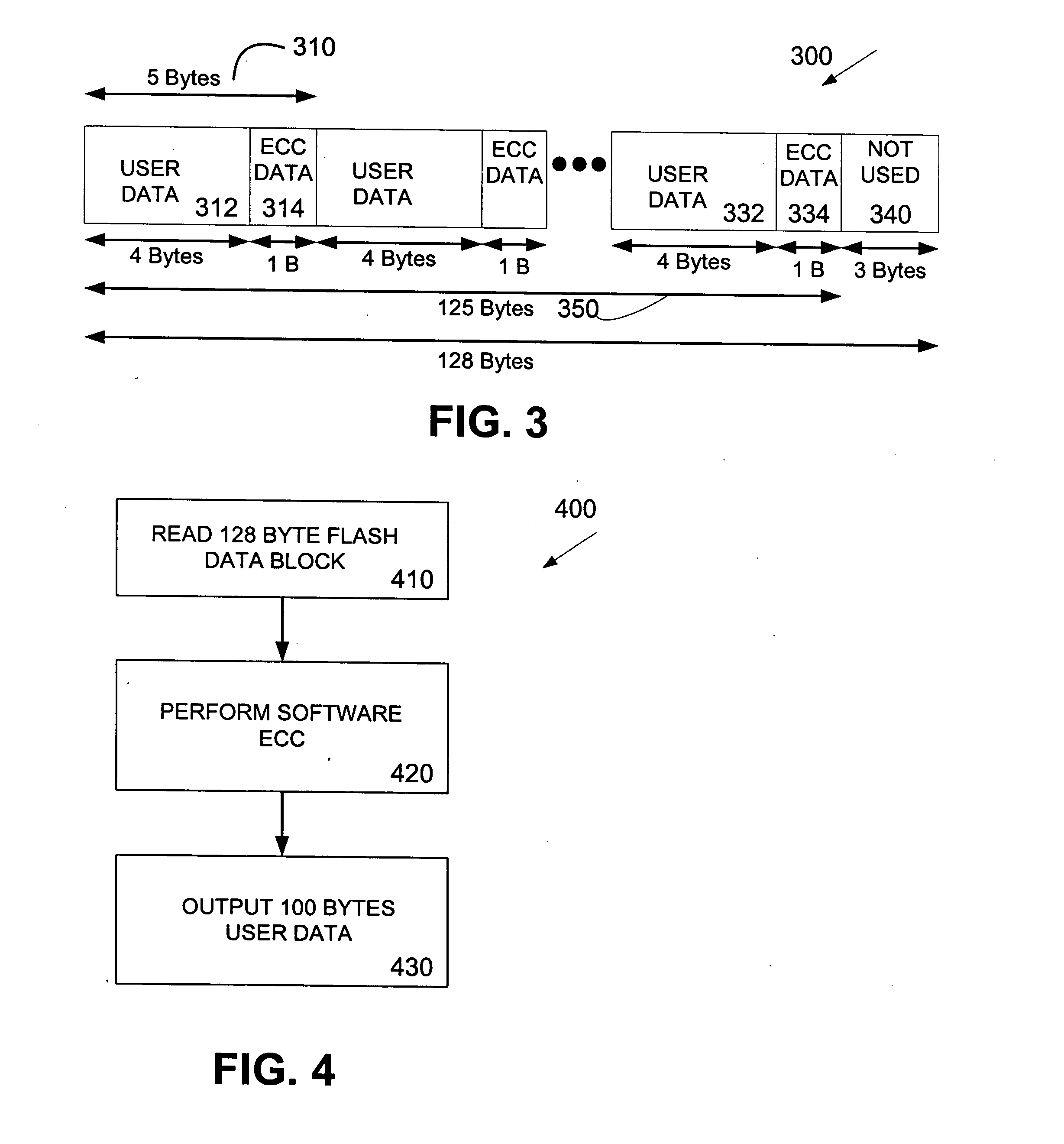System and method for efficient uncorrectable error detection in flash memory
a flash memory and error detection technology, applied in error detection/correction, instruments, coding, etc., can solve the problems of volatile ram, inability to easily reprogramme, storage is erased, etc., and achieves efficient, robust detection, and low bit strength.
- Summary
- Abstract
- Description
- Claims
- Application Information
AI Technical Summary
Benefits of technology
Problems solved by technology
Method used
Image
Examples
Embodiment Construction
[0021]A system and method for efficient uncorrectable error detection in flash memory is described. Many flash memory algorithms today use an ECC (Error Correction Constant (or Code)) algorithm to provide for error correction and often to prolong the life of the flash memory device beyond the expected relatively short-term failure of a small number of bit locations. An ECC can compensate for bit errors in flash memory. The software algorithm reads the flash data and ECC to RAM. If the ECC verifies, there are no bad cells. If the ECC is not correct, the software can correct the cell that is not correct if there are not too many errors. The data correction includes cells in the data or cells in the ECC itself. However, ECC algorithms only have a certain bit strength depending on the length of the ECC and only a certain number of bits can be corrected. A problem arises if there are more bit errors than the number that can be corrected. The ECC may software may start to corrupt good cel...
PUM
 Login to View More
Login to View More Abstract
Description
Claims
Application Information
 Login to View More
Login to View More - R&D
- Intellectual Property
- Life Sciences
- Materials
- Tech Scout
- Unparalleled Data Quality
- Higher Quality Content
- 60% Fewer Hallucinations
Browse by: Latest US Patents, China's latest patents, Technical Efficacy Thesaurus, Application Domain, Technology Topic, Popular Technical Reports.
© 2025 PatSnap. All rights reserved.Legal|Privacy policy|Modern Slavery Act Transparency Statement|Sitemap|About US| Contact US: help@patsnap.com



